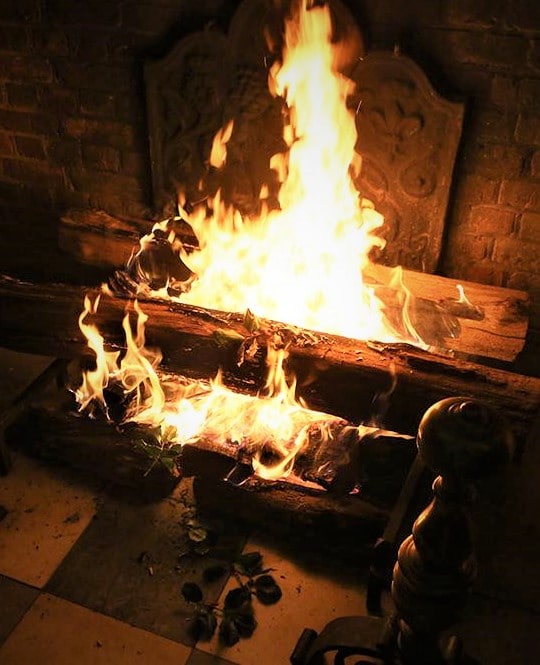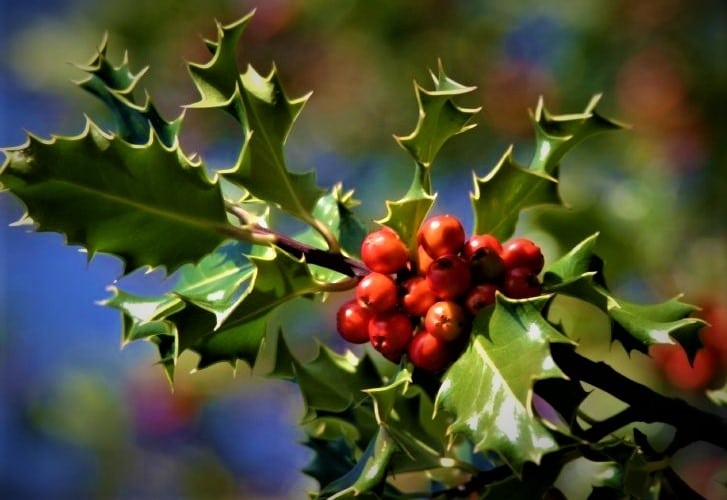
Since the dawn of human history, our ancestors took note of the Winter Solstice, the point in the solar cycle from which the period of daylight begins to lengthen. Although now considered the first day of winter, this date was initially significant as a reminder of the increasing light and warmth to come and thus celebrated as a marker of hope.While many cultures celebrate the solstice, modern Christmas symbols and traditions have stout roots in early Germanic and Old Norse midwinter customs, and the solstice itself has come to be referred to by the name Yule, the modernized version of the Old English ġéol (pronounced zheul), which actually refers to a twelve day midwinter festival.
In Swedish, Danish and Norwegian jul and Old Norse, Faroese and Icelandic jól, we find linguistic precursers.The pre-Christian origins of this name is made clear by references to Yule in 4th-century Gothic language. Later, the 8th century English historian Bede recorded a mid-winter month in the Anglo-Saxon calendar named geola or giuli and wrote of Mōdraniht (Mother’s Night), an event honoring female ancestors and guardian spirits or fylgja, celebrated by pagan Anglo-Saxons on what is now Christmas Eve, evidence that these seasonal celebrations were linked to fertility. Our most significant pre-Christian references to Yule come from the Old Norse Eddas and sagas in which the God Odin is referenced by heiti or by-names such as jólfaðr (Old Norse for “Yule father”) and jólnir (“the Yule one”).

Historically, Yule was a time of great celebration, deeply spiritual in nature, with sacred toasts honoring the Gods and Ancestors, and communal feasting on the meat of animals sacrificed in a ceremony known as blót. Falling just after harvest and the late autumnal slaughter of livestock not needed for breeding stock the following spring, it was a time of plenty, to be followed by the scarcity and hunger of deep winter. Not surprisingly, fire has a significant role in both Yule and Christmas celebrations, blazing on the hearth and glowing from candles and in the lights twinkling from holiday trees. The boughs of evergreens still lushly green in winter offered decorations that reminded folks of the renewal of life in the warming months that would eventually follow the solstice. The Yule log, traditionally a huge piece of oak, was laid upon a hearth swept clean and lit with song and ceremony to burn through the longest night in honor of Sunna’s return.
The process of replacing indigenous winter celebrations with Christian ones was furthered in many ways. Certain modern Christmas favorite foods have deeply Heathen origins. Roast boar or Sonargöltr (a beast sacred to Freyr, God of peace and fertility) is echoed in our modern Christmas ham. Eggnog, a thick sweet drink traditionally made with eggs and cream, was quaffed in an invocation of fertility, and Wassail, named for the Anglo Saxon greeting “Waes Hael!”, began as a toast of sweetened ale or mead served hot with added eggs, fruit and spices.
The transition from Heathen sacred tradition was furthered by King Haakon I of Norway, who violently and forcibly Christianized the country he ruled from 934 to 961. Among other commands, Haakon rescheduling the date of Yule to coincide with Christian celebrations held at the time. In the saga which bears his name, it is noted that Yule had previously been celebrated for three nights from midwinter night. Although subsuming indigenous traditions and ceremonies was a common means of Christianization, traditional Heathen beliefs and practices long persisted in private, gradually being reframed by the Church. In the familiar customs of modern Christmas celebrations one still finds the core elements hallowed by our Germanic, Anglo-Saxon and Scandinavian Ancestors.